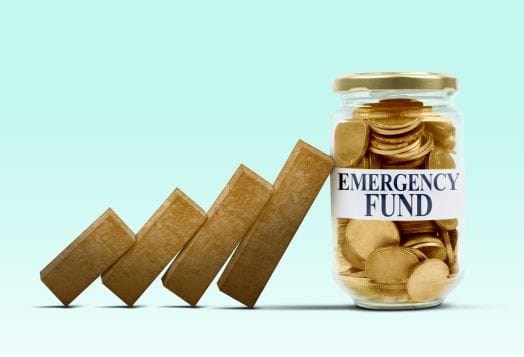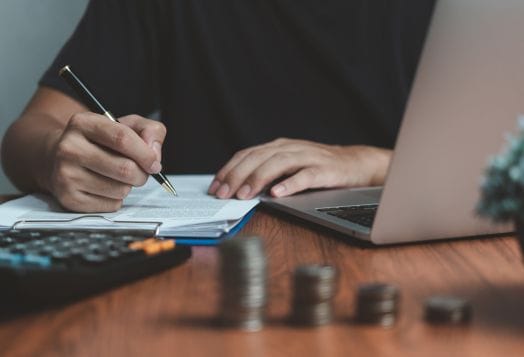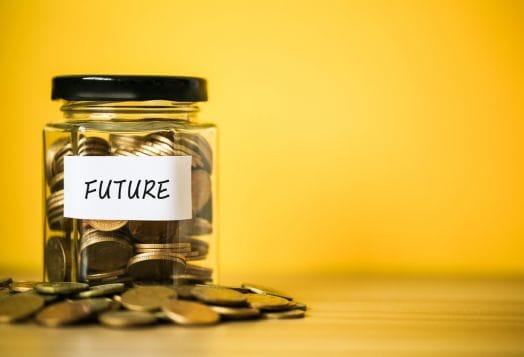Life is unpredictable. One moment, everything is running smoothly, and the next, an unexpected medical bill, car repair, or job loss can throw your finances into chaos. That’s why having an emergency fund is crucial. It acts as your financial safety net, protecting you from stress and debt in times of crisis.
But the burning question remains: how much emergency fund should I have?

The Purpose of an Emergency Fund
An emergency fund acts as a financial safety net against unexpected events. Without one, you might rely on credit cards or loans, leading to debt that can be hard to pay off. Having an emergency fund offers peace of mind, ensuring you’re prepared for life’s uncertainties.
Building an emergency fund is an essential part of financial planning. It allows you to handle unexpected expenses without disrupting your long-term financial goals, such as retirement savings or a down payment on a house. It empowers you to navigate life's uncertainties with confidence and financial security.
How Much Emergency Fund Should I Have?
The ideal size of your emergency fund depends on your lifestyle, income stability, and financial obligations. Here’s a detailed breakdown:
1. Basic coverage (1–3 months of expenses)
Suitable for individuals with a stable income, few financial dependents, and access to other financial resources. This level of coverage helps cover short-term financial disruptions, such as minor medical emergencies, car repairs, or temporary job gaps.
2. Moderate coverage (3–6 months of expenses)
Ideal for families, individuals with dependents, or those with significant financial responsibilities. This level of emergency savings ensures that essential expenses, such as rent, mortgage payments, groceries, utilities, and insurance premiums, are covered in case of unexpected job loss, health emergencies, or economic downturns.

3. Extended coverage (6–12 months of expenses)
Recommended for freelancers, business owners, or anyone with an irregular income stream. This extended coverage provides a greater financial cushion to manage unpredictable work fluctuations, longer periods of unemployment, or significant emergencies that could impact your long-term financial security.
4. Customised Approach
Depending on their specific circumstances, some individuals may need to save even more than 12 months' worth of expenses. If you have high medical expenses, a single-income household, or work in an unstable industry, a larger fund may be necessary.
To determine the exact amount that fits your needs, consider tracking your essential monthly expenses, including rent, utilities, food, healthcare, and transportation. Multiply this amount by the desired months of coverage to establish your target emergency fund goal.
Where to Keep Your Emergency Fund
An emergency fund should be easily accessible but not so readily available that you're tempted to spend it on non-emergencies. Consider these options:
1. High-interest savings accounts
These accounts provide liquidity while earning interest, making them a great option for emergency savings. Look for accounts with no withdrawal penalties and competitive interest rates.
2. Fixed deposits with premature withdrawal options
Fixed deposits offer higher interest rates than savings accounts. Choose deposits that allow early withdrawal without hefty penalties so you can access your funds if necessary.
3. Money market accounts
With a good balance between returns and liquidity, money market accounts often offer higher interest rates than traditional savings accounts while still allowing easy withdrawals.
4. Separate bank accounts
Keeping your emergency fund in a separate account can reduce the temptation to dip into it for non-essential expenses.
Your choice should prioritise easy accessibility, safety, and potential for modest growth. Avoid high-risk investments for emergency savings, as you need these funds to be readily available when an unexpected crisis arises.
How to Build Your Emergency Fund
Starting small is better than not starting at all. Follow these steps to build an emergency account:
1. Set a realistic goal
The first step is to determine how much money you need. Calculate your essential monthly expenses - rent, utilities, groceries, transportation, and minimum debt payments. Then, decide how many months of these expenses you want your emergency fund to cover. A common recommendation is 3-6 months, but this can vary depending on your job security, health, and overall financial situation. Don't aim for an unrealistic amount that discourages you from starting.
2. Automate your savings
One of the most effective ways to build your emergency fund is to automate the process. Set up a recurring transfer from your checking account to your designated emergency fund account. Even small, regular contributions add up over time. This “set it and forget it” approach removes the temptation to spend the money elsewhere and ensures consistent progress towards your goal.
3. Cut unnecessary expenses
Take a close look at your spending habits. Identify areas where you can cut back, such as dining out, entertainment, or impulse purchases. Redirect the money you save towards your emergency fund. Even small changes can make a big difference over time. Consider using budgeting apps or the envelope system to track your spending and identify areas for improvement.
4. Use windfalls wisely
Unexpected income, such as bonuses, tax refunds, or gifts, should be treated as opportunities to boost your emergency fund. Resist the urge to splurge and instead allocate a significant portion, or even all of it, towards your savings goal. These windfalls can significantly accelerate your progress.
5. Increase contributions over time
As your income grows, increase the amount you contribute to your emergency fund. Regularly review your budget and savings plan to ensure you're on track and adjust your contributions as needed. Consider setting a percentage of your income to allocate to your emergency account and increase that percentage as your income rises.

When to Use Your Emergency Fund
An emergency fund is strictly for genuine financial emergencies, such as:
Unexpected medical expenses
Job loss or income disruption
Significant home or vehicle repairs
Unplanned travel for family emergencies
It is not meant for planned expenses like vacations or tax payments, new gadgets, or lifestyle upgrades.
Quiz: How Ready Are You for a Financial Emergency? 1. If you lost your job today, how long could you cover your essential expenses without income? A) Less than a month B) 1–3 months C) 3–6 months D) More than 6 months 2. Where do you currently keep your emergency savings? A) I don’t have any emergency savings B) In my regular checking account C) In a separate savings or money market account D) In a high-interest, easily accessible savings account 3. How do you contribute to your emergency fund? A) I don’t save regularly B) I save when I have extra money C) I have a set amount I save each month D) I automate my savings and increase contributions over time |
A Little Rainy Day Fund
A sudden crisis can disrupt even the most carefully planned budget. That's precisely why an emergency fund is so crucial. It's your financial safety net, a buffer against those uh-oh moments that inevitably arise. Think of it as self-care for your finances. Knowing you have a cushion to fall back on reduces stress and allows you to navigate life's uncertainties without resorting to high-interest debt. Building this fund doesn't have to be overwhelming. Start small, be consistent, and you'll be prepared for whatever comes your way.
Disclaimer: This information provided is intended for general informational purposes only. It is not a substitute for professional advice or guidance. For personalised recommendations or specific concerns, please consult a professional financial consultant.




